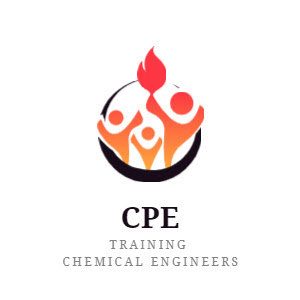Hope everyone is safe and fine. Today i've made sometime to post on the classification of reactions using Stossel's Criticality Index (SCI).
Stossels Criticality Index (SCI) uses the heat of reaction data and thermal stability data to define a reaction class.
Before going to the post in depth, lets see certain nomenclature to have better understanding in the further steps.
What is Tprocess ?
Tprocess (Tp) refers to the operating temperature at which desired reaction occurs.
What is ΔT ad ?
ΔT ad refers to adiabatic temperature raise i.e., the temperature raise which happens when the energy cannot be transferred out of the system. The energy generates here is due to the reaction heat.
What is MTT ?
MTT refers to the Maximum Technical Temperature (MTT), which is the boiling point of solvent available in reaction mass
What is TMR ?
TMR refers to Time to Maximum Rate i.e., the time for the reaction to consume before reaching the onset of decomposition.
What is onset of decomposition ?
Onset of decomposition is the temperature where exothermic decomposition initiates.
What is decomposition ?
Decomposition is an undesired scenario during reaction maintenance which evolves due to sudden shoot up of energy of reaction mass either due to thermal accumulation or due to external supply of energy.
What is thermal accumulation ?
Thermal accumulation is the percentage of energy which is being available with reaction mass after complete dosing of reactant.
Thermal accumulation + Thermal conversion = 100%.
What is TMR, ad24hrs ?
TMR, ad24hrs refers to the onset of decomposition when the reaction mass is maintained for 24 hours under adiabatic conditions i.e., with failure of utility circulation. As the time passes, the onset of decomposition reduces.
What is MTSR ?
MTSR is the Maximum Temperature to Synthesis Reaction i.e., the ability of reaction mass to reach its maximum temperature which is attributed by the heat generated during reaction.
How is the MTSR calculated ?
MTSR shall be calculated as below,
MTSR due to accumulation = Tprocess + (% accumulation x ΔT ad)
MTSR in worst case = Tprocess + ΔT ad
Hope the terms are clear for everyone.
Now lets get into the topic, there shall be five classes in SCI.
The classes are being defined based on the parameters which were described above i.e., Tp, ΔT, TMR, ad24hrs, MTT.
Lets see the classes and their interpretation below.
Here is the representation of SCI:
Class - 1
Observation: In the subject class, MTSR is less than that of MTT and TMR, ad24hrs
Interpretation: Class - 1 is a safe scenario w.r.t. reaction heat, however if energy is supplied through utilities and the total solvent available in the reaction mass is vaporized due to inadequate utility supply to condensers, there shall be risk.
Mitigation plans required: Ensure proper utility to condensers
Class - 2
Observation: In the subject class, MTSR is less than that of TMR, ad24hrs and MTT is beyond TMR, ad24 hrs.
Interpretation: Class - 2 is safe w.r.t. heat released due to reaction. However, if there is any energy in from external sources i.e., the utilities like steam / hot water / hot oil systems, then there is a risk involved.
Mitigation plans required: Control the usage of utilities during reaction.
Class - 3
Observation: In the subject class, the MTSR is greater than the MTT and less than that of TMR, ad24hrs.
Interpretation: The reaction mass potential to reach high temperatures is being controlled by the solvent boiling, as giving more energy leads to reflux of solvent. Hence the subject class is safe till there is adequate solvent available for reflux.
Mitigation plans required: Ensure the process contains enough solvent volumes to compensate the losses due the energy release and ensure adequate utility circulation to condenser.
Class - 4
Observation: MTSR is higher than TMR, ad 24hrs and the MTT is less than TMR, ad24hrs.
Interpretation: The scenario is having risk, however as the MTT is less the risk can be mitigated by consuming more solvent in the process
Mitigation plans required: Ensure adequate utility circulation at condenser and avoid solvent losses.
Class - 5
Observation: MTSR and MTT are above TMR, ad24hrs
Interpretation: Decomposition cannot be detected and its a risky scenario at any point of time.
Mitigation plans required: Don't execute the process on plant scale. Take the process back to R&D and re-engineer it either by changing the solvent or by changing the raw materials to control the adiabatic temperature raise.
So, this is how we need to read the SCI and interpret the classes and provide certain mitigation plans to reduce the risk involved.
If you have any queries in the post, pl reach us at pharmacalc823@gmail.com
Comments are most appreciated .....!!
for better understanding on the above post we have hosted a video on youtube, you can access the content for free






 Hi! I am Ajay Kumar Kalva, owner of this site, a tech geek by passion, and a chemical process engineer by profession, i'm interested in writing articles regarding technology, hacking and pharma technology.
Hi! I am Ajay Kumar Kalva, owner of this site, a tech geek by passion, and a chemical process engineer by profession, i'm interested in writing articles regarding technology, hacking and pharma technology. 
No comments:
Post a Comment